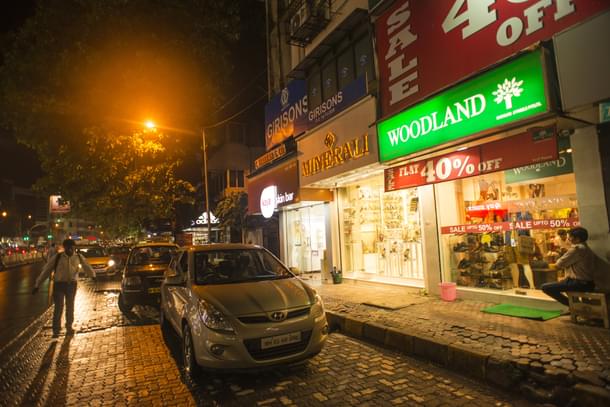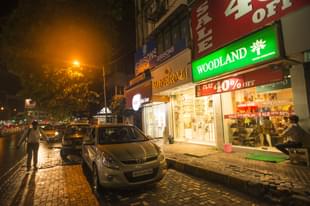Economy
Retail 24X7: Here’s How India Can Get There
Sara John
Aug 31, 2017, 04:07 PM | Updated 04:06 PM IST
Save & read from anywhere!
Bookmark stories for easy access on any device or the Swarajya app.


The Indian economy is striving to gain momentum having revived from the shock of demonetisation, and now taking on the challenges of the recently implemented goods and services tax (GST). The economy is expected to grow at 7.2 per cent in the current fiscal year. Though India is one of the fastest growing economies in the world and where the working age population grows by 16 million every year, only less than two million jobs are created annually in India. In the age category of 15 to 29 years, more than 30 per cent of Indians are neither employed nor involved in education nor training.
The Indian retail industry is the largest among all the industries in the country, accounting for over 10 per cent of the country’s gross domestic product (GDP) and around 8 per cent of total employment. The retail market is expected to grow at a compounded annual growth rate of 10 per cent reaching $1.6 trillion by 2026. It is one of the emerging sectors in India with a potential to generate more jobs. As per the National Skill Development Corporation, the retail sector will require additional human resource of 17.35 million by 2022.
The Model Shops and Establishments Act proposed by the central government is purported to tap the potential of the retail sector to create more jobs and boost the economy by relaxing the existing norms and thus promoting Ease of Doing Business in India. One of the key provisions of the Act is that it allows shops and establishments to remain open 24/7 and operate 365 days a year. It does not compel everyone to operate 24/7, but provides relief for those who would like to keep their shops or establishments open during the night from the grip of red tapism.
Diversification of jobs has led to changes in the lifestyle of people. An increase in per capita income has resulted in greater consumption power of urban dwellers, which has created more demand for quality and value-added services, implying the need to modernise retail in India. Across the world, there has been recognition of the demand for night-time entertainment. But in India, the concept is still in its formative years.
The concept of shops and establishments remaining open 24/7 may not be one that Indians can relate to now, considering the law and order situation, transportation issues, safety concerns and societal norms. Bengaluru is an industrial hub with many business establishments and IT enterprises, which work 24/7. However, many women living in the city feel unsafe during late night hours. This is mainly attributed to the lack of public transportation facilities in the night. There is a lot of work to be done before India switches to the 24/7 mode and promotes itself as a hub for nightlife. But that is not the scenario across the globe, where 24/7 model is the norm in many countries.
London, New York and Singapore are a few leading examples of countries that have adopted the 24/7 model. The vibrant nightlife in London has pervaded even its inner urban centres like Peckham and Dalston in south and east London, where nightlife was limited 10 years ago. It validates the possibility of developing even remote centres into thriving centres of nightlife with careful planning, management, better connectivity and investment. The Night Time Industries Association (NTIA) of London formed by the supporters of night-time industries works with the local authorities to foster a safe and remunerative night economy. According to NTIA, the night-time industry in the UK accounts for almost 8 per cent of its employment and 6 per cent of its total revenue.
Yet another example is the transformation of Times Square, once an epitome of economic deterioration, into a centre for entertainment, promoting itself as a tourist destination. Amsterdam has a night mayor to look into the issues and safety parameters during the night, wherein a thriving night-time economy has been instrumental in attracting around 4.6 million tourists every year. This shows that the concept of nightlife becomes more relevant, when it is combined with tourism and for branding cities.
This will be a challenge as well as an opportunity for urban planners, the corporation and the state, which will play a decisive role in branding our cities and attracting tourists. Night shopping could be initiated in India by identifying select regions as shopping hubs in a few potential cities on an experimental basis. Such models, if successful, can be replicated in other areas or cities. Public transportation and infrastructure need to be developed in pace with the expansion of nightlife and it is incumbent on the state to ensure it. The state cannot shrug off its responsibility and depend on the market to ensure the safety of the citizens. To quote former US president Ronald Reagan, the government’s first duty is to protect the people and not run their lives.
The cities in India being branded and known for a vibrant nightlife seems to be a pipe dream right now, but it can be realised through careful planning, cooperation and effective implementation. The Model Act paves the way for changing the law with changing times and demands, which could be welcomed as a step towards building the foundation of a vibrant night economy. It is time to start thinking big, thinking retail and rolling up our sleeves for a thriving nightlife.
Sara John is Project Associate, Centre for Public Policy Research, a think tank based in Kochi.




